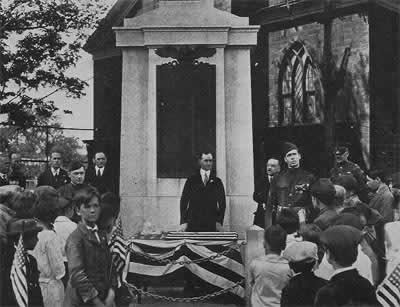The borough of Dumont was founded on July 20, 1894. Present-day Dumont was originally part of larger Shraalenburgh, a Dutch province that included the present-day boroughs of Bergenfield, Dumont, Haworth, and parts of Closter. The original Dutch settlers had traveled into present-day Bergen County from Fort Amsterdam, which was located in lower Manhattan Island. The Dutch parent colony of New Netherland lasted from the early 17th century to 1664, with the surrender of the colony to Britain. With Governor Pieter Stuyvesant's surrender of New Netherland in 1664, Britain gained control of the Dutch claims in New York and New Jersey. The colony was briefly recaptured by the Netherlands in 1673 in one of the Anglo-Dutch wars, but was restored to British control soon after in 1674. When Dumont became a separate borough in 1894, it initially kept the name of Schraalenburgh (the other towns changed their names). The borough originally contained 3 square miles; however, strips of land were ceded to the neighboring townships of Palisades Twp. (Pd New Milford) and Harrington Twp. (Pd Haworth). In 1898, Schraalenburgh changed its name to Dumont, named after Dumont Clarke, the first mayor of the borough. Dumont's main historical landmarks include Camp Merritt and The Old North Reformed Church (see below) at the intersection of Washington and Madison Avenues. Celebrating over one hundred years as a borough, Dumont has grown and developed into a thriving community, currently home to 17,500 residents*. The Old North Church The Old North Church, located on the southwest corner of Washington and Madison Avenues, is perhaps Dumont's finest link to its past. Founded in 1724 as a result of a schism from the "too liberal" South Church of Bergenfield, the church actually owned and governed most of Schraalenburgh, an area of nearly three square miles, from Cresskill to Palisade Twp (New Milford) and from Harrington Twp (Haworth) to Bergenfield. The word Schraalenburgh actually means "ridges" in Dutch. The Old North Church and surrounding area was governed by the Consistory, a board made up of the eldest deacons, elected by the congregation. Hundreds of years later, the Consistory still functions in making decisions for the congregation. The Old North Church Cemetery first began burying parishioners over two centuries ago. This cemetery remains the resting place for dozens of Revolutionary War and Civil War veterans. Well-known parishioners buried at this cemetery include members of the Blauvelt, Demarest, and Quakenbush families. |






